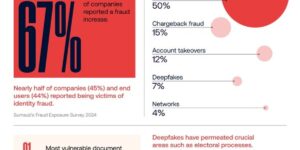The U.S. government is expected on Wednesday to release the final version of voluntary standards meant to help U.S. companies in nationally critical industries better protect themselves against cyber attacks.
Criticized in earlier drafts for being too vague and toothless, the so-called cybersecurity framework attempts to turn a vast amount of industry input into guidelines designed for 16 different sectors whose disruption could be devastating to the country.
Exactly one year after President Barack Obama issued an executive order directing a Commerce Department agency to compile voluntary minimum standards, the National Institute of Standards and Technology, or NIST, is due to issue guidelines, which companies have no obligation to adopt.
Drafters of the framework had to allay concerns by many in the private sector that their voluntary standards could someday become regulations. The threat of restrictive rules has helped stall progress on passing a cybersecurity law in Congress.
The framework, drafted by the non-regulatory NIST in consultation with thousands of industry experts, offers broad benchmarks for companies to measure the effectiveness of their cyber defenses.
“The federal government has an overriding interest to protect critical infrastructure,” said Norma Krayem, a former official at the Transportation, State and Commerce departments who now works with infrastructure companies as a senior policy adviser at law firm Patton Boggs.
“But they don’t own or control it, and at the moment, the cyber framework is the means to work collaboratively with critical infrastructure to address (cybersecurity) concerns.”
‘GETS MURKY REALLY FAST’
Cybersecurity experts warn that relentless efforts to hack into U.S. banks and financial institutions, the power grid and other critical infrastructure, paired with instances of disruptive attacks abroad, pose a national security threat.
The issue recently became a household topic after hackers stole about 40 million credit and debit card records and 70 million other records with personal customer data from the third-largest U.S. retailer, Target Corp.
Many experts have expressed alarm about the lack of awareness or reluctance among some companies’ leadership to spend more money on cyber defenses. The framework could force the issue into more executive suites, analysts say.
“At a minimum, it’s going to force this conversation up the food chain, out of the CEO office into the boardroom,” said Tom Kellermann, a former member of Obama’s Commission on Cyber Security and software company executive now with professional services firm Alvarez & Marsal.
But it is unclear whether the private sector, always concerned about liabilities attached to any standards, would widely adopt the voluntary framework. The Departments of Homeland Security, Commerce and Treasury are reviewing potential incentives for adoption.
It is also unclear how effective the framework will prove in practice.
“At that high level, they got it right. … Further down, it gets murky really fast,” said Andrew Ginter, vice president of industrial security at Waterfall Security Solutions, whose clients include power plants and water-treatment facilities.
“The NIST framework never uses the word ‘firewall.’ It’s that abstract,” he said, referring to a common standard component of network security.
According to earlier drafts, the framework offers sweeping categories such as “access control” or “data security” to evaluate how effectively a company identifies and protects network assets, and detects, responds to and recovers from breaches, on a one-to-four-tier scale for implementation.
The categories then break into slightly narrower areas, such as keeping inventories of used software platforms and applications, ensuring that top executives know roles and responsibilities, and setting information security policies.
The document also incorporates how the companies could do that while protecting privacy and civil liberties.
The voluntary standards are meant to complement and fill the gaps left by existing regulations that apply to some of the sectors, such as energy and financial services.




















 The Evolving GenAI Journey: Three Ways the Technology Is Impacting P/C Insurance
The Evolving GenAI Journey: Three Ways the Technology Is Impacting P/C Insurance  So…Where Are We Now? VC Viewpoint on InsurTech Funding Trends
So…Where Are We Now? VC Viewpoint on InsurTech Funding Trends  Deterioration Continues in U.S. Commercial Auto Insurance Segment After $5B Net Loss in 2023
Deterioration Continues in U.S. Commercial Auto Insurance Segment After $5B Net Loss in 2023  When the Boss Doesn’t Want to Hear About Your Stress
When the Boss Doesn’t Want to Hear About Your Stress 
